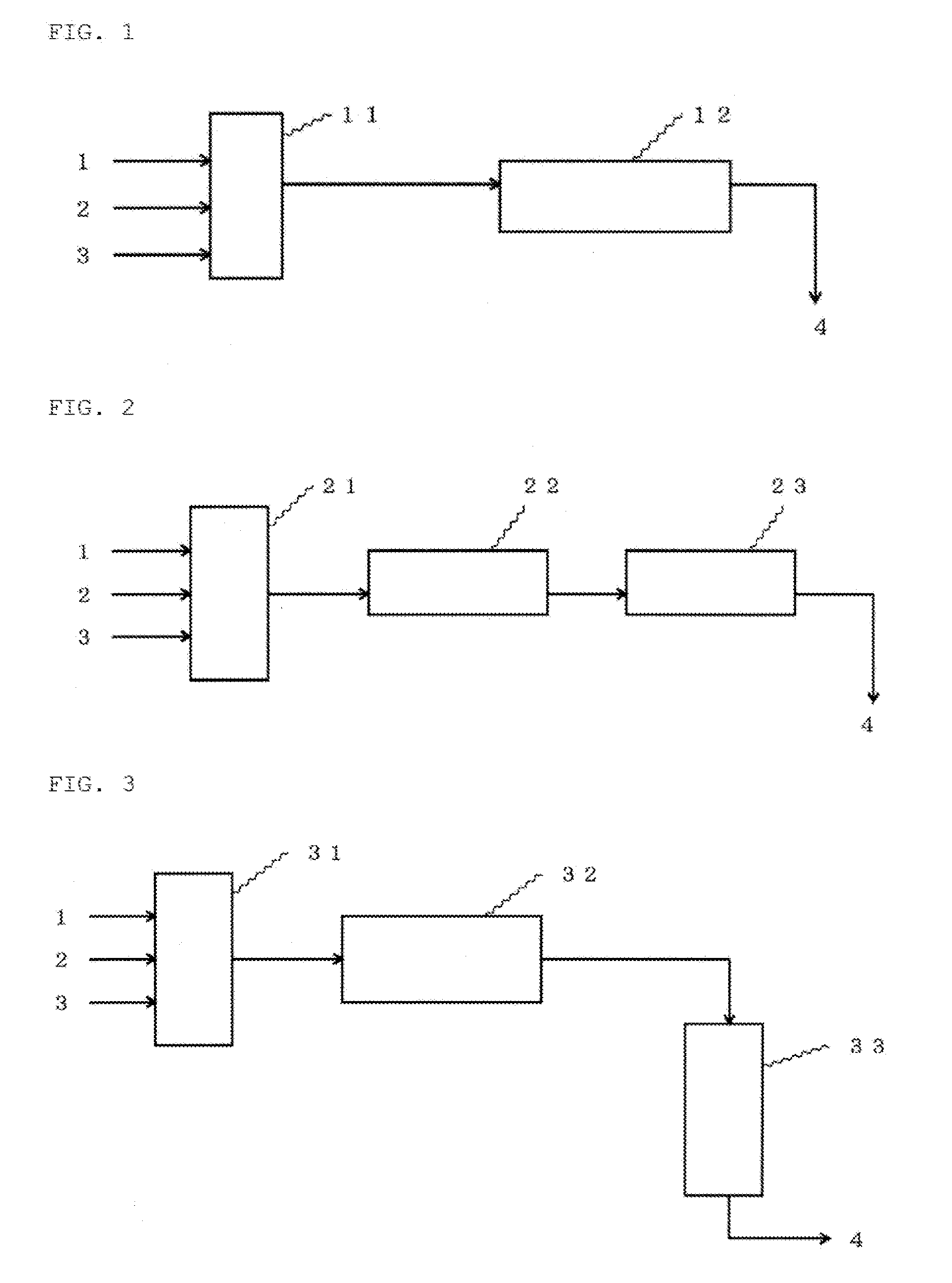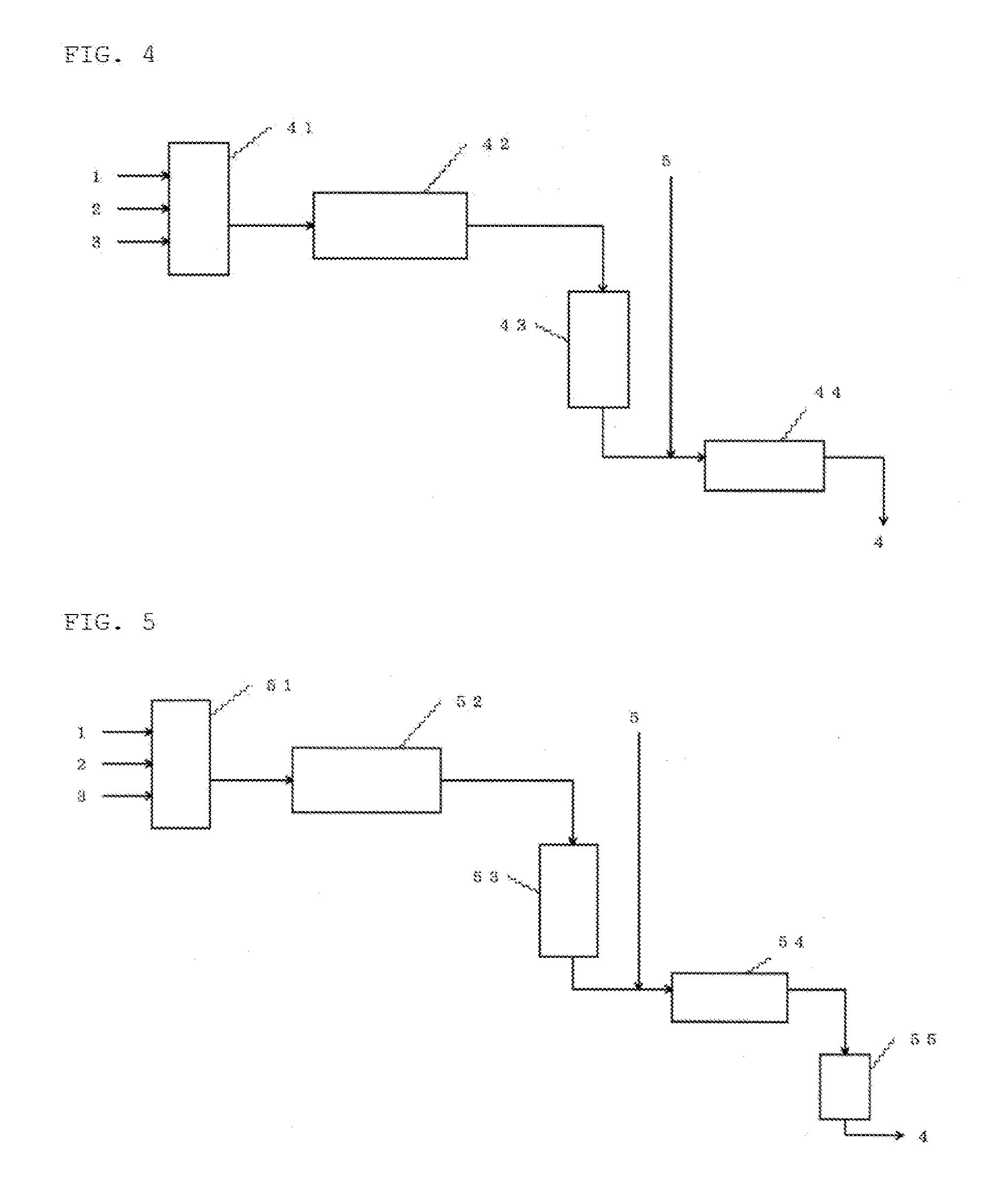Method for continuously producing ketomalonic acid compound using flow reactor
a technology of flow reactor and ketomalonic acid, which is applied in the direction of liquid-liquid reaction process, organic chemistry, chemical/physical/physicochemical process, etc., can solve the problems of difficult handling of reagents, affecting the efficiency of reagent production, and the use of tartronic acid that is much more expensive than malonic acid diesters as raw materials, so as to achieve safe, stable, efficient and safe production of ketomalonic acid compounds, the effect of continuous production
- Summary
- Abstract
- Description
- Claims
- Application Information
AI Technical Summary
Benefits of technology
Problems solved by technology
Method used
Image
Examples
example 1
Method Using a Microreactor
[0379]Two microreactors (mixer helix type manufactured by YMC CO., LTD.) were prepared, and the outlet of the first microreactor was connected to one of the inlets of the second microreactor using a tube. A Teflon (registered trademark) tube with a diameter of 1.0 mm and a length of 9 m was connected to the outlet of the second microreactor so as to use the Teflon (registered trademark) tube as the reactor tube. The 9 m Teflon (registered trademark) tube was immersed in a silicone oil bath so as to be heatable.
[0380]The first microreactor was heated to 80° C., the silicone oil bath was heated to 130° C., a 25% aqueous solution of sodium chlorite and acetic acid were respectively supplied to the first microreactor through the two inlets using a syringe pump, and diethyl malonate without a solvent was supplied through the other inlet of the second microreactor using a syringe pump.
[0381]The supply ratio was that diethyl malonate:acetic acid:25% aqueous solut...
example 2
[0383]The apparatus used in Example 1 was used, both of the first and second microreactors were not heated but left at room temperature, the silicone oil bath was heated to 95° C., and in the same manner as in Example 1, a 25% aqueous solution of sodium chlorite and acetic acid were respectively supplied to the first microreactor through the two inlets using a syringe pump and diethyl malonate without a solvent was supplied through the other inlet of the second microreactor using a syringe pump.
[0384]The supply ratio was that diethyl malonate:acetic acid:25% sodium chlorite aqueous solution was set to 1:1:10 in a volume ratio.
[0385]The flow rate in the Teflon (registered trademark) tube was 1.27 m / min. The reaction mixture discharged through the outlet of the Teflon (registered trademark) tube was analyzed by gas chromatography, and the conversion ratio of diethyl malonate was 86.50% as a result.
examples 3 to 6
[0393]In order to conduct a reaction by the use of only one microreactor, a mixture of acetic acid and diethyl malonate was prepared in advance at a weight ratio of diethyl malonate:acetic acid of 5:1 and this mixture was supplied through one inlet. A 25% aqueous solution of sodium chlorite was supplied through the other inlet of the microreactor. A tube with a diameter of 1 mm and a length of 9 m was connected to the outlet of the microreactor and managed so as to be heated by a silicone oil bath in the same manner as in Example 1.
[0394]The conversion ratio was measured for each of the cases in which the molar ratio of sodium chlorite to diethyl malonate, the flow rate, the temperature of the microreactor, and the bath temperature were changed.
[0395]The results are presented in the following Table 1.
TABLE 1DiameterLengthConcentrationTemperatureMeanof theof theExampleof sodiumMolarof theflow ratereactorreactorBathConversionNo.chloriteratiomicroreactor(m / min)tubetubetemperatureratio ...
PUM
| Property | Measurement | Unit |
|---|---|---|
| temperature | aaaaa | aaaaa |
| diameter | aaaaa | aaaaa |
| groove diameter | aaaaa | aaaaa |
Abstract
Description
Claims
Application Information
 Login to View More
Login to View More - R&D
- Intellectual Property
- Life Sciences
- Materials
- Tech Scout
- Unparalleled Data Quality
- Higher Quality Content
- 60% Fewer Hallucinations
Browse by: Latest US Patents, China's latest patents, Technical Efficacy Thesaurus, Application Domain, Technology Topic, Popular Technical Reports.
© 2025 PatSnap. All rights reserved.Legal|Privacy policy|Modern Slavery Act Transparency Statement|Sitemap|About US| Contact US: help@patsnap.com



